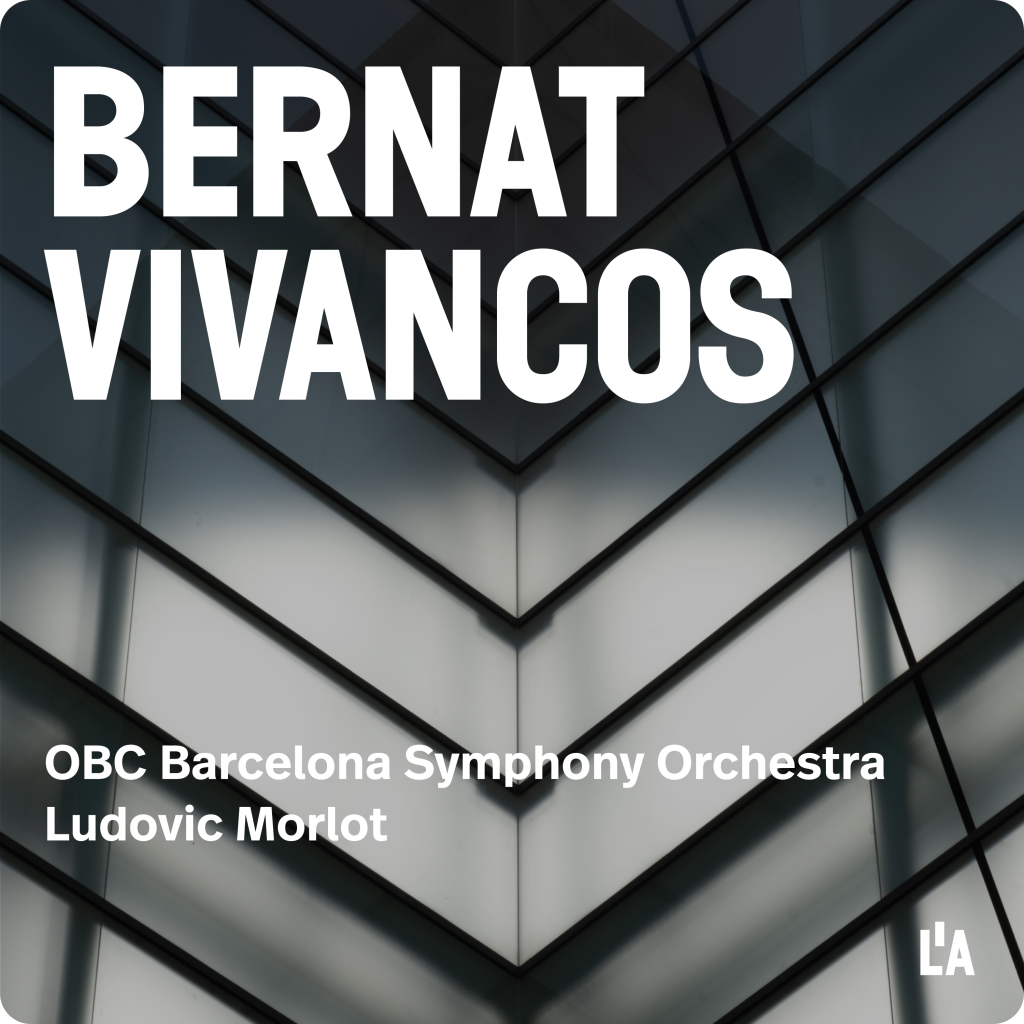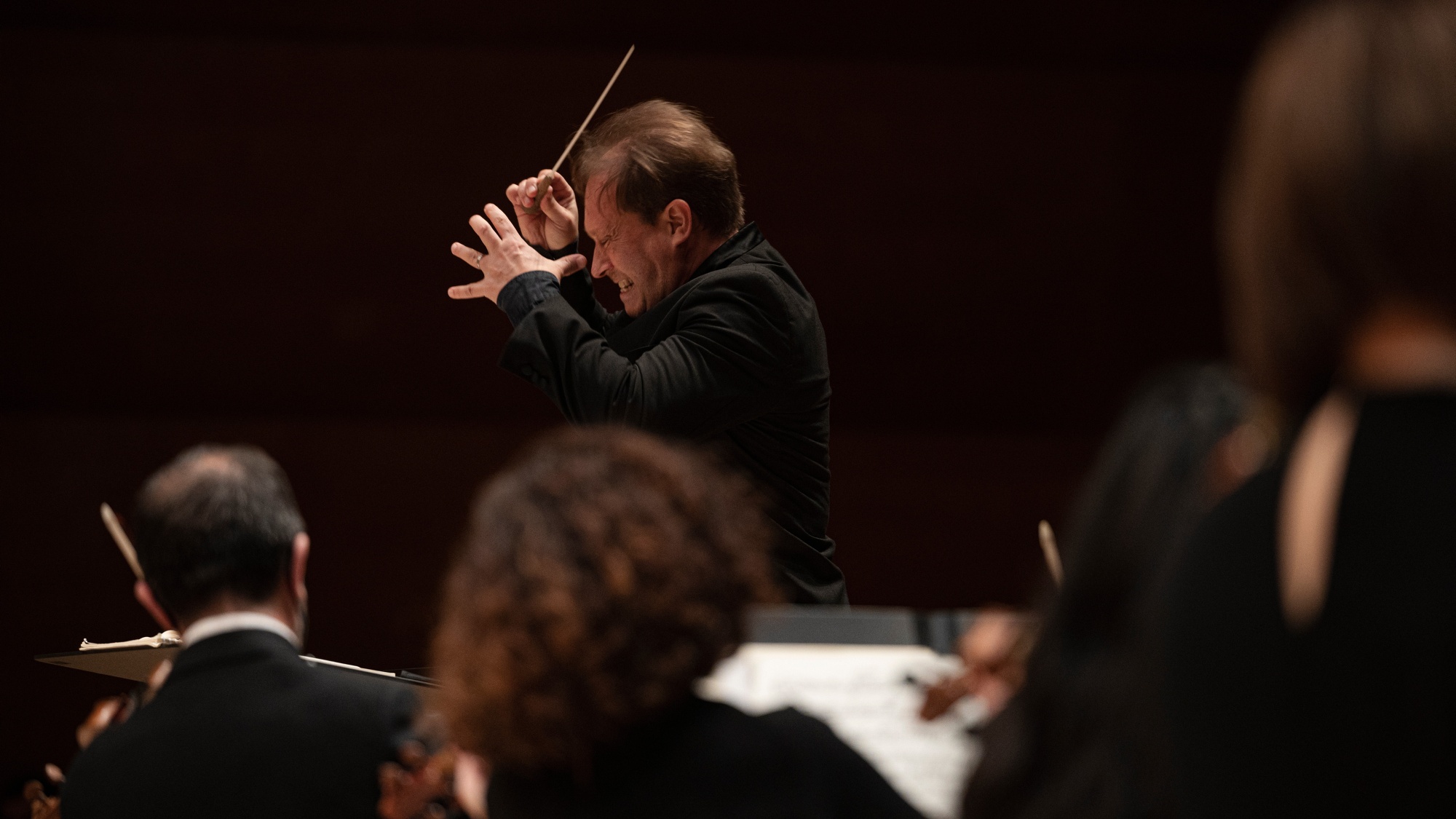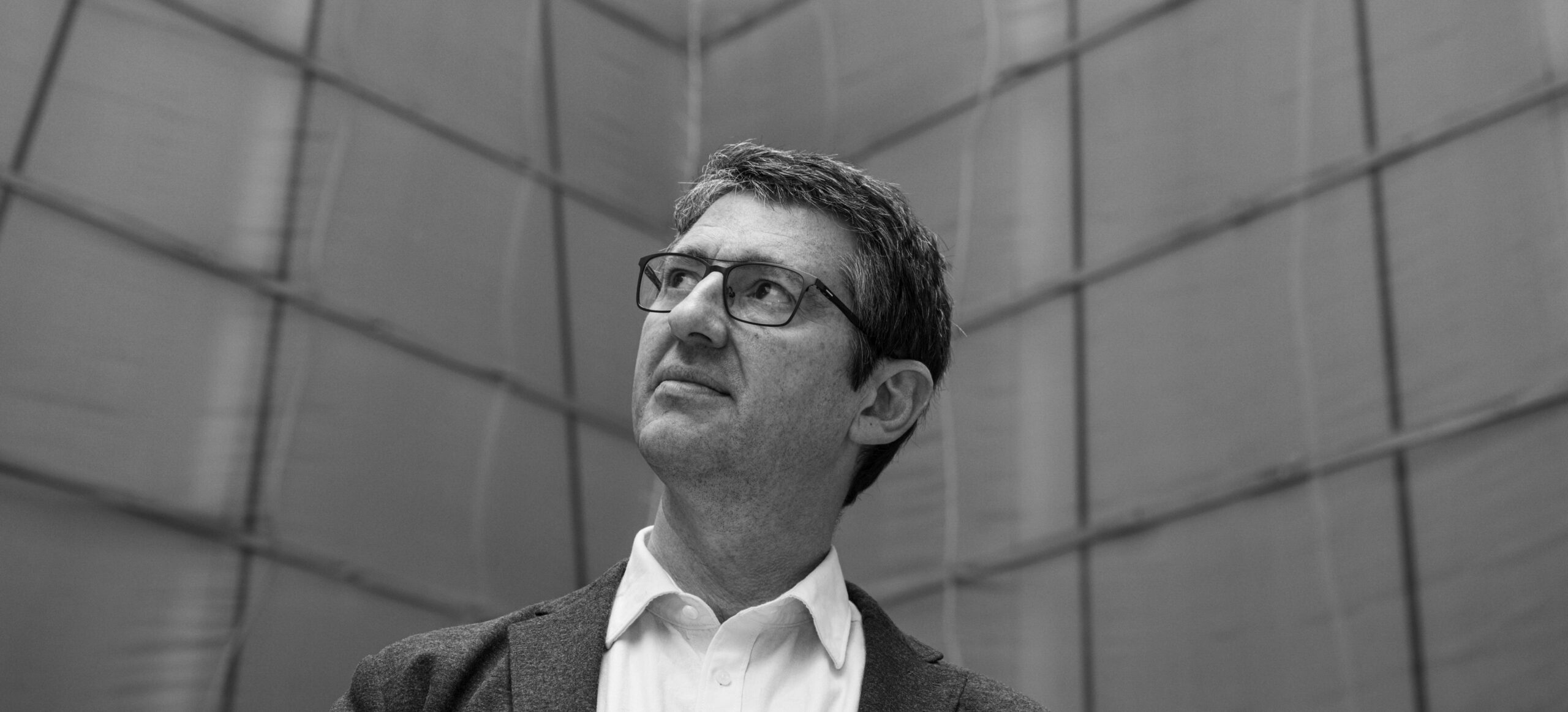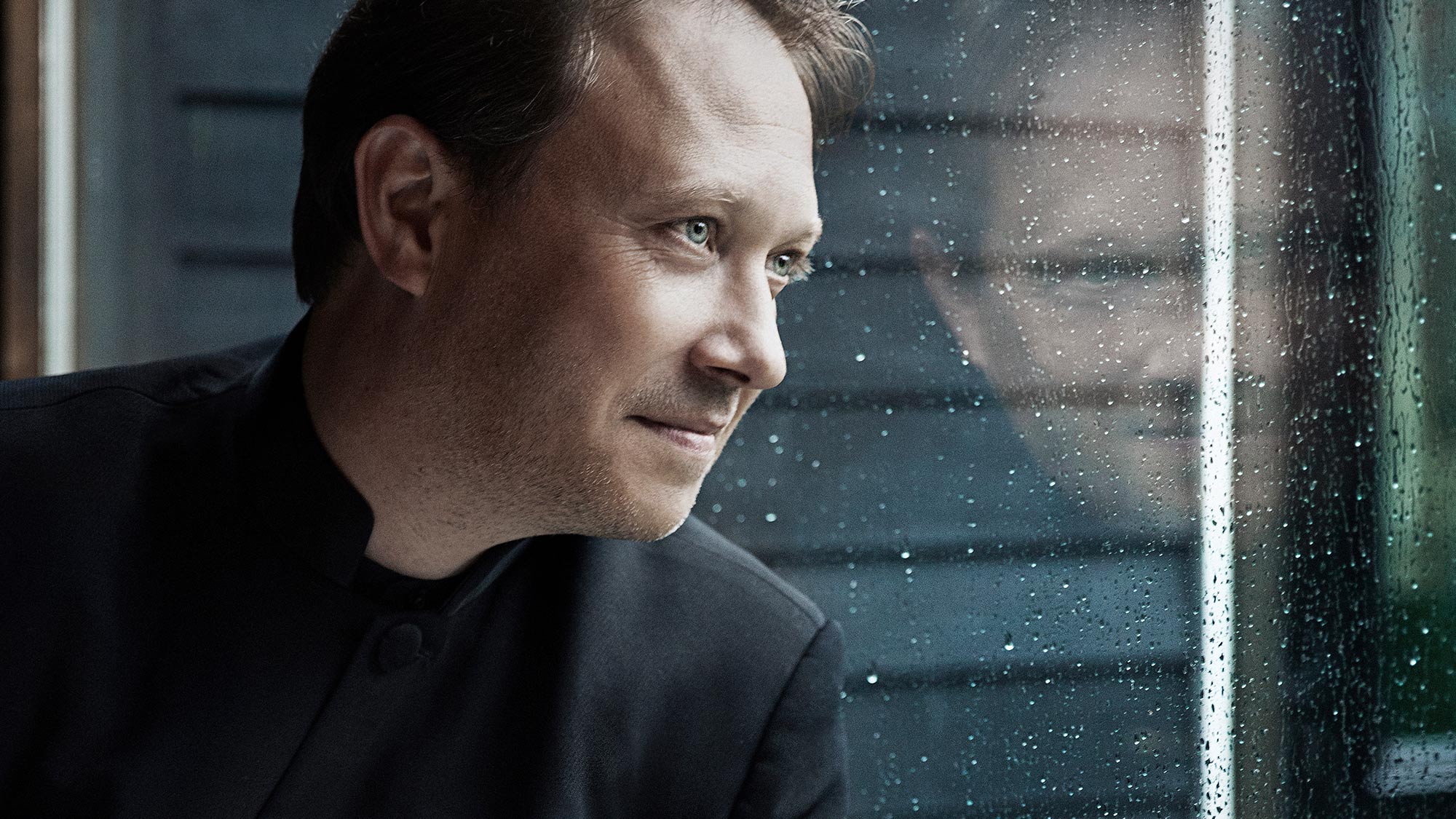
U
Jordi Savall described Bernat Vivancos’ music as a new musical Renaissance: “His extraordinary talent and his profound spirituality are placed at the service of a process that is the invention of a new language which, in spite of its complexity and modernity, is capable of transmitting to us pure beauty and emotion.”
In U, commissioned in 2021 by the OBC and recorded in 3D format in 2022 under the direction of Maestro Ludovic Morlot, the big orchestra is rearranged into three different groups according to tuning. Thus, as in a sea of rich and vibrant colours, waves of richly microtonal textures collide. In this piece, Vivancos represents a longing, the desire to get closer, to make our own that light in the abyss of darkness, that glimmer of hope that we only intuit, an oasis in the desert, and which we glimpse in the middle of thousands of difficulties. The delicate, incredibly fine melody that shines pure, like a crack in a wide wall of sound. A “u” that is also as a symbol of this sound utopia which is, at the same time, a metaphor for the eternal human utopia: the search for the “you”, whoever this other is.
LA-OBC-006 | RELEASE DATE: 8 December 2023

U
2021
To understand the music of Bernat Vivancos (Barcelona, 1973), two vital experiences in his training should be borne in mind, two essential keystones of his musical aesthetics and sound imagination. The first of these was the period he spent with L’Escolania de Montserrat (Montserrat Boys’ Choir), where he worked on the sung voice –singing in a group, in a choir with spiritual overtones and austere modality– his raw material. The second experience was his stay in Oslo, as a student of Lasse Thoresen, where he studied in depth the sound, timbre, subtle resonances and multiple colours of the harmonic spectrum. From there, he continued to expand his work, sometimes leaning more towards one style (such as Nigra sum, for choir, and Offertorium, for clarinet quartet), and sometimes another (such as Requiem, heterodox and eclectic, and Blau, for orchestra), and every so often taking the middle path (which, contrary to what it might seem, ended up being, paradoxically, the most experimental path), such as the work we discuss here: U.
The far-sighted Jordi Savall sums it all up perfectly, saying of Bernat Vivancos: “his extraordinary talent and deep spirituality were put at the service of a process of inventing a new language that, despite its complexity and modernity, is capable of conveying pure beauty and emotion. Perhaps this is the great mystery of creation in all true works of art, that which achieves a perfect balance between technique and emotion, between beauty and spirituality, thus creating a fabric of new sounds that, up close, will never cease to move us.”
Bernat Vivancos is a composer who does not limit himself to merely putting notes on a stave. His realm is the entire space in which the work will come alive, the physical space and the acoustic space, acting as architect or landscaper, placing the musicians here and there; whether constructing from within the music, from within the sound, in the very heart of musical thought, of the sound imagination. Interior, sonic cloister.
In U, composed in 2021, the great orchestra is rearranged into three spaces according to tuning: a first group of musicians tune their instruments with the tuning fork at 442 kHz (the most common tuning along with the famous 440), a second group tunes theirs to an octave below the first group (at 432 kHz) and a third group tunes them to an octave above (at 448 kHz). Thus, as in a sea of rich and vibrant colours, waves of richly microtonal textures collide (sometimes aggressively, but only sometimes), allowing the melodic motives reserved by the composer for the instruments tuned in the standard way (note A at 442 kHz) to be heard softly, as if muted, and which strive to make themselves heard among the magma sparks of sound emitted by the other two tunings.
In this piece –which always remains calm and unhurried but with an intense and latent force and tension– there is a clear and firm aim to represent a longing, the desire to get closer, to make our own that light in the abyss of darkness, that glimmer of hope that we only intuit, an oasis in the desert, and which we glimpse in the middle of thousands of difficulties and densities. The delicate, incredibly fine melody that shines pure, like a crack in a wide wall of sound. A “u” that is also as a symbol of this sound utopia which is, at the same time, a metaphor for the eternal human utopia: the search for the “you”, whoever this other is. Taking the verse of the poet Blanca Llum Vidal: “this love that is not u” but multiplicity and otherness. And, as the poet Josep Pedrals says at the end of Els límits del Quim Porta: “We are nothing / I am sure. / We are nothing, / but You are there.”
Joan Magrané

BERNAT VIVANCOS
The musical personality of Bernat Vivancos (Barcelona, 1973) is marked by the impressions received during his school years at the Monastery of Montserrat. Son of a deeply musical family, having completed studies in piano and composition with Maria Canals and David Padrós in Barcelona, he moved to Paris for five years to study composition at the Conservatoire National Supérieur de Musique et de Danse de Paris with professors Guy Reibel, Frédéric Durieux, Marc-Andre Dalvabie and Alain Louvier, where he graduated on Composition, Orchestration and Analysis. The year of 2000 became a turning point in his career, he discovered the music of Norwegian composer Lasse Thoresen, and moved to Oslo to broaden his studies there, in fact, this will mark his musical orientation and future work. Thereafter Vivancos style incorporates elements that make his work a unique proposal: a music sound rich of color and textural, modal music converge on Western tradition and the search for a spirituality based on a Spectral harmonic inspiration. These two fundamental aspects represent the strong influence of the nature of Vivancos’ work: nature as root and soil, symbol of tradition, but also as a presence that manifests itself consistently in the physical properties of sound.
Since 2003 he is professor of Composition and Orchestration in the Catalonia College of Music (ESMUC) a post he combines with his research activities in the field composition, and the request to participate as member of the jury in international orchestration and composition competitions. From 2007 to 2014 he served as the music director of the Choir of Montserrat. During 2014-2015 he was Composer on Residence, shared with Arvo Pärt, in Palau de la Música Catalana (Barcelona), and during 2021-2022 he was selected as Guest Composer in Auditori de Barcelona.
He has published several CDs, among which stand out “Blanc” (2011) (doubly rewarded by critics as the best album of 2011), and «Requiem» (2015), both recorded by the famous Latvian Radio Choir conducted by Sigvard Klava (Neu Records).
Vivancos’ music, full of limpid sounds and ecstatic harmonies, climbing architectures and resonances of nordic luminosity, aims to unite beauty, sensuality and spirituality. Vivancos has a wide range of vocal and instrumental music, with particular attention to orchestral production, and receives commissions from numerous international ensembles. His music has interested pop artists such as Rosalia and Jennifer López with whom he has collaborated with different projects.

OBC BARCELONA SYMPHONY ORCHESTRA
Ludovic morlot
FIRST VIOLINS: Jaha Lee, Joan Espina, Sarah Bels, Walter Ebenberger, Ana Galán, María Pilar Pérez, Ana Kovacevic, Neus Navarrete, Laura Pastor, Francesc Puche, Aria Trigas, Yulia Tsuranova | SECOND VIOLINS: Emil Bolozan, Maria José Balaguer, Jana Brauninger, Mireia Llorens, Melita Murgea, Paula Banciu, Mar Miñana, Ariana Oroño, Oleksandr Sora | VIOLAS: Benjamin Beck, Christine de Lacoste, David Derrico, Sophie Lasnet, Adrià Trulls, Celia Libertad Eliaz, Javier López, Johan Rondón | CELLOS: Charles-Antoine Archambault, José Mor, Lourdes Duñó, Jean-Baptiste Texier, Irene Cervera, Yoobin Chung | DOUBLE BASSES: Christoph Rahn, Dmitry Smyshlyaev, Albert Prat, Salvador Morera | FLUTES: Sara Ureña, Ricardo Borrull | OBOES: Raquel Pérez-Juana, José Juan Pardo | CLARINETS: Larry Passin, Lluís Casanova | BASOONS: Thomas Greaves, Slawomir Krysmalski – contrabagot | FRENCH HORNS: Juan Conrado García, Pablo Marzal | TRUMPETS: Adrián Moscardo, Miguel Herráez | TROMBONES: Eusebio Sáez, Carlos Fluixà, Miquel Sàez – BASS TROMBONE | LIBRARIAN: Begoña Pérez | TECHNICAL COORDINATOR: Ignasi Valero | STAGE MANAGER: Luis Hernández | PLANNING DIRECTOR: Joan Cortés
PHOTOS May Zircus | SOUND ASSISTANT Toni Vila | MUSIC PRODUCTION AND SOUND Nacho de Paz, Hugo Romano Guimaraes | GRAPHIC DESIGN Lorena Alonso Noblom | EDITORIAL DIRECTION Santi Barguñó
Album recorded in January 2021 in L’Auditori de Barcelona.
Supported by

